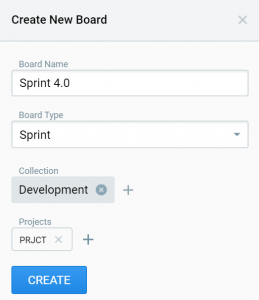All We Should Know About Scrum Project Management: the Beginner’s Guide

Scrum is a widely adopted method for achieving software agility. However, it is not the sole method of implementing Agile principles, as a large Agile family consists of different methodologies.
What is Scrum?
Scrum is a method of iterative and incremental product delivery that uses frequent feedback and collaborative decision-making. The process consists of short Sprints.
Applying the methodology allows teams to respond rapidly, efficiently, and effectively to changes within the product management. When the project ends, Scrum ensures that the most valuable work has been completed.
In fact, it contrasts with the more traditional Waterfall approach that requires the extensive creation of requirements, analysis and design documentation before developing.
What is the history of Scrum?
The first mentioning of Scrum was associated with a paper written in 1986 by Hirotaka Takeuchi and Ikujiro Nonaka for the Harvard Business Review. It was titled “The new product development game.”
The authors described the benefits of self-organizing teams in innovative product development with the help of a metaphor connected with rugby.
Ken Schwaber, Jeff Sutherland, and Mike Beedle were the next “chain elements” that applied the ideas from the paper to the software development sphere. These people called the new method Scrum (regarding playing rugby – the term that describes how teams form a circle and go for a ball to get it back into play again).
Scrum Roles
The scrum approach requires the participation of three roles: a Scrum Master, a Product Owner, and team members.
- A Scrum Master is a key person who keeps the process, protect the team, and act as an advocate for the team. Scrum Masters remove all obstacles, facilitate team communication and arrange discussions with the team. They also negotiate with “the external world”.
- Product Owners represent the voice of the customer. They have total authority to make decisions about the product. They also responsible for maintaining a product backlog with defining and prioritizing all the backlog items and communicating the vision to the team. Any Product Owner should work in cooperation with the team daily. It will definitely help him/her to answer the questions and provide product guidance.
- Team is usually presented by 6-8 members responsible for the delivery of the product. They make task commitments and estimates, as well as and report daily status during the daily Scrum meetings. If the Product Owner owns the “What”, the team definitely owns the “How.”
Scrum Artifacts
Scrum project management requires very few artifacts. It concentrates instead on delivering software that produces business value.
Here’s the list of the key Scrum artifacts:
- A Product Backlog that consists of a complete set of the functionality that remains to be added to the product. The product backlog is usually prioritized by the Product Owner who is also responsible for arranging backlog grooming sessions. It allows teams always work on the most valuable features first.
- A Sprint Backlog is a prioritized list of tasks the team needs to complete any Sprint.
- Burndown charts that are used to show the amount of work remaining in a Sprint and provide an effective way to determine whether a Sprint is on schedule to have all planned issues finished. Here’s how a Burndown chart can be visualized with the help of Hygger:
A set of Scrum ceremonies
Different ceremonies and meetings represent Scrum approach. There are required Scrum ceremonies: Sprint planning meeting, daily meetings, the Sprint review and the retrospective.
Release planning meetings are optional. They allow for the planning and forecasting of groups of Sprints. Let’s dive into the main ones.
Sprint planning meeting
A Sprint planning meeting is a required event that is held on the first day of every Sprint by the Scrum Master, the Product Owner, and the Team.
It looks like this:
- The Product Owner presents the set of features to be completed in the Sprint.
- The team members define the tasks needed to implement these features.
- Everybody review work estimates to see if the team has the time to complete all the features requested.
- The team commits to the Sprint. If not – the features with the lower priority go back into the backlog.
Tracking progress
Product managers and the team members begin to track the progress after the Sprint planning meeting is complete. It’s high time for everybody to remember helpful and smart task boards.
Task boards are used to track the progress of the tasks for each feature. Everyone who has access may easily use the columns To Do, Doing, Done, and others.
It is quite easy to appoint a daily Scrum meeting on the task board and to move items across the board.
(Learn more about how to work with Scrum using a helpful toolkit in Hygger University tutorial).
Sprint review
The main idea of this kind of meeting is to invite all Stakeholders at the end of the Sprint to a Sprint review. During this meeting, all the features that were completed in the Sprint are reviewed and feedback is requested.
All feedback details are tracked by the Product Owner who incorporates them into the product backlog if needed. After this, the team conducts a retrospective that is aimed to determine what was done well, what they struggled with or what recommendations and improvements are needed.
Release planning
Release Planning is an event aimed to do long-term planning for a time box that consists of multiple Sprints.
This kind of planning is often done quarterly. It can be just an internal release to confirm system integration and validation.
Release Planning requires the participation of all team members. The Product Owner presents the features to be completed in the following quarter.
The planning can be feature-driven, time-driven or cost-driven.
5 reasons to choose Scrum Project Management
- The method is rather simple and any team can benefit from it.
- Scrum allows teams to feel more flexible to evolving business goals and altering requirements. Team members can react as quickly as possible.
- The internal relations in Scrum teams are close and based on trust. It happens because the team members work closely together towards a common goal.
- A customer is at the center of the development process in Scrum. It makes the framework one of the most customer-oriented.
- Scrum is a transparent process that engages Stakeholders. Daily meetings are aimed to increase this transparency by discussing the progress, planning adjustments if necessary, and delivering feedback.
Hygger opportunities for working with Scrum
The all-in-one product management platform for growing companies offers a wide toolkit for working with Scrum. First of all, you may create a simple Sprint board.
It’s quite easy to fill your working board with tasks, evaluate them and launch the first Sprint.
You’ll definitely need to run Sprint planning and you have several options for evaluation – both in Story Points and in hours. Time Tracking does not depend on the chosen estimation option – you can also log working time. Once all estimations are finished – you can start a new Sprint:
Hygger also provides the option to control the Sprint progress on the Burndown Chart.
To sum it up
Scrum is a popular framework in Agile project management that helps to deliver valued products iteratively, continually inspecting and adapting the process.
We hope that this rather short overview of Scrum was helpful and you’ve got a real interest in other additional areas of product and project management. Feel free to learn about other project management methodologies and formulate your feedback in the comments.








